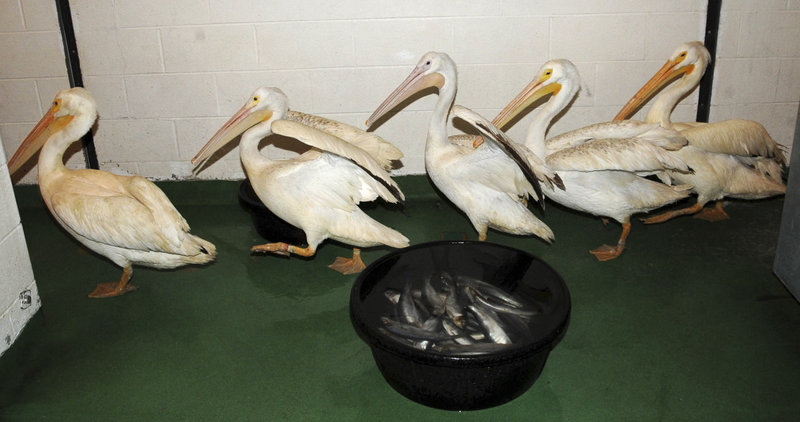ON THE GULF OF MEXICO — Key ships stationed over BP’s crippled well in the Gulf of Mexico were ordered to evacuate Thursday ahead of Tropical Storm Bonnie, but engineers have grown so confident in the leaky cap fixed to well head that they will leave it closed while they are gone.
Tropical Storm Bonnie, which blossomed over the Bahamas and was to enter the Gulf of Mexico by the weekend, could delay by another 12 days the push to plug the broken well for good using mud and cement, retired Coast Guard Adm. Thad Allen and BP officials conceded. Even if it’s not a direct hit, the rough weather will push back efforts to kill the well by at least a week.
“While this is not a hurricane, it’s a storm that will have probably some significant impacts, we’re taking appropriate cautions,” Allen said in Mobile, Ala.
Allen issued the order Thursday night to begin moving dozens of vessels from the spill site, including the rig that’s drilling the relief tunnel engineers will use to permanently throttle the free-flowing crude near the bottom of the well.
Some vessels could stay on site, he said.
“While these actions may delay the effort to kill the well for several days, the safety of the individuals at the well site is our highest concern,” he said in a statement.
A week of steady measurements through cameras and other devices convinced Allen they don’t need to open vents to relieve pressure on the cap, which engineers had worried might contribute to leaks underground and an even bigger blowout. The cap was attached a week ago, and only minor leaks have been detected.
Seas already were choppy in the Gulf, with waves up to five feet rocking boats as crews prepared to leave, and more of the smaller boats involved in the coastal cleanup were called into port, Coast Guard Rear Adm. Paul Zukunft said.
In Florida, crews removed booms intended to protect waterways in the Panhandle from oil. High winds and storm surge could carry the booms into sensitive wetlands.
Also, Shell Oil began evacuating employees out in the Gulf.
Louisiana Gov. Bobby Jindal said he expects local leaders in coastal parishes to call for evacuation of low-lying areas as early as this morning.
At the spill site, the water no longer looks thick with gooey tar. But the oil is still there beneath the surface, staining the hull of cutters motoring around in it.
One large vessel – the Helix Q4000 – is burning off oil collected from the water, and bright orange flames flared at the side of the ship. Scientists say even a severe storm shouldn’t affect the well cap, nearly a mile beneath the ocean surface 40 miles from the Louisiana coast.
“Assuming all lines are disconnected from the surface, there should be no effect on the well head by a passing surface storm,” said Paul Bommer, professor of petroleum engineering at University of Texas at Austin.
Charles Harwell, a BP contractor monitoring the cap, was also confident.
“That cap was specially made, it’s on tight, we’ve been looking at the progress and it’s all good,” he said after his ship returned to Port Fourchon, La.
Before the cap was attached and closed a week ago, the broken well spewed 94 million to 184 million gallons into the Gulf after the BP-leased Deepwater Horizon rig exploded April 20, killing 11 workers.
Work on plugging the well came to a standstill Wednesday, just days before authorities had hoped to complete the relief shaft. Allen said Thursday he has told BP to go ahead preparing for a second measure called a static kill that would pump mud and cement into the well from the top, a move he said would increase the relief well’s chances for success. BP will have to get final approval from Allen before starting the procedure.
Vice President Joe Biden visited cleanup workers in southern Alabama, and said he was cheered the cap could remain on.
“After the storm’s passage we will be right back out there,” Biden said.
Meanwhile, officials are reporting that the number of dead birds collected on the Gulf Coast has more than doubled in the past month. Officials say 2,599 dead birds had been collected on the Gulf Coast as of Thursday.
A month ago, 1,046 dead birds had been collected, according to official death counts.
The number of other dead animals being reported by officials has not climbed as steeply. For example, in the past month the number of dead sea turtles has grown from 411 to 483 and dead mammals from 47 to 62.
Some bird conservation groups are stepping up criticism of the efforts to protect nesting areas and say government figures drastically under count the number of affected birds.
Send questions/comments to the editors.



Success. Please wait for the page to reload. If the page does not reload within 5 seconds, please refresh the page.
Enter your email and password to access comments.
Hi, to comment on stories you must . This profile is in addition to your subscription and website login.
Already have a commenting profile? .
Invalid username/password.
Please check your email to confirm and complete your registration.
Only subscribers are eligible to post comments. Please subscribe or login first for digital access. Here’s why.
Use the form below to reset your password. When you've submitted your account email, we will send an email with a reset code.